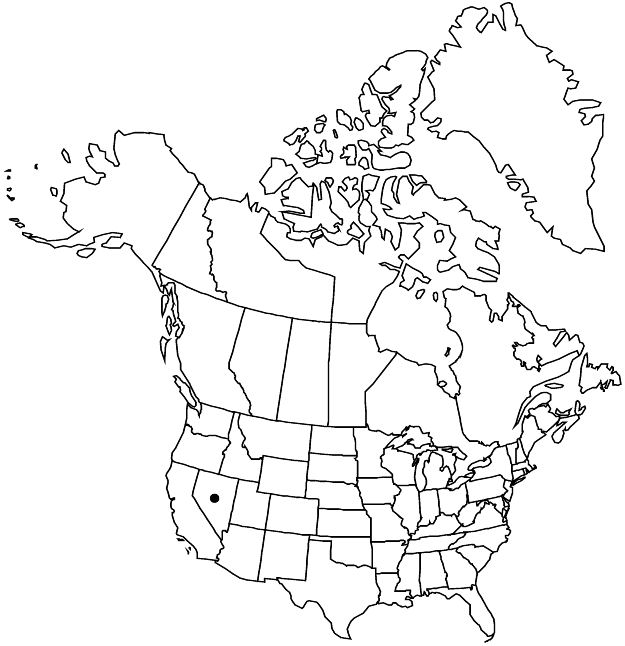Ivesia pityocharis
Syst. Bot. 14: 241, fig. 6. 1989.
Plants grayish green to silvery, sometimes reddish tinged; glands sparse. Stems prostrate-decumbent to ascending, 0.5–2 (–3) dm. Basal leaves 6–12 (–15) cm; sheathing base weakly strigose abaxially; stipules absent; petiole (1–) 1.5–2.5 (–3) cm, hairs abundant, ascending to spreading, 1–4 mm; leaflets 15–25 per side, loosely overlapping, (1.5–) 2–7 mm, lobes 0–4 (–6), lanceolate or oblanceolate to elliptic, hairs abundant, spreading to ascending, 1–3 mm. Cauline leaves 2–5. Inflorescences (7–) 15–50-flowered, 2–8 cm diam., flowers arranged individually and/or in several to many loose few-flowered glomerules. Pedicels (3–) 6–15 (–22) mm. Flowers 8–13 mm diam.; epicalyx bractlets lanceolate to elliptic, 2–3 mm; hypanthium patelliform to shallowly cupulate, 1.5–2.5 × 3–4.5 mm, ± 1/2 as deep as wide; sepals often purple-suffused, 2.3–4 (–5) mm, acute; petals white, broadly spatulate or obovate to orbiculate, (2.8–) 3–5 (–6) mm; stamens 20, filaments filiform, (1–) 1.5–3 mm, anthers light pink, 0.3–0.5 mm; carpels 8–20, styles 2.2–3 mm. Achenes light-brown, 1.2–1.3 mm.
Phenology: Flowering summer.
Habitat: Vernally saturated meadows, in sagebrush communities
Elevation: 2100–2700 m
Discussion
Of conservation concern.
Ivesia pityocharis is known only from the Pine Nut Mountains, Douglas County. Plants are somewhat intermediate between those of I. kingii and I. sericoleuca in having relatively shallow hypanthia and loosely sericeous vestiture. Hairs on petioles and stem bases of I. pityocharis are to 4 mm; those of I. kingii are 1 mm and generally appressed-ascending.
Selected References
None.
Lower Taxa
"thin" is not a number."dm" is not declared as a valid unit of measurement for this property."dm" is not declared as a valid unit of measurement for this property."dm" is not declared as a valid unit of measurement for this property.
